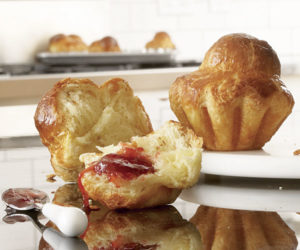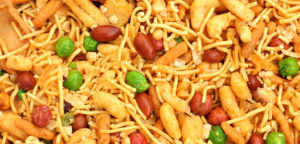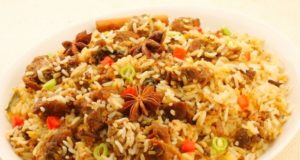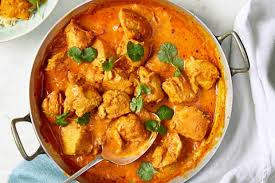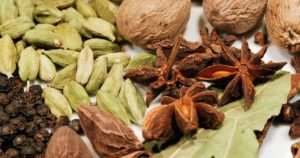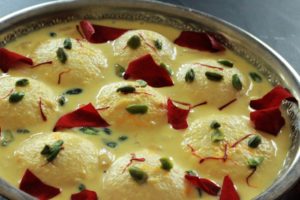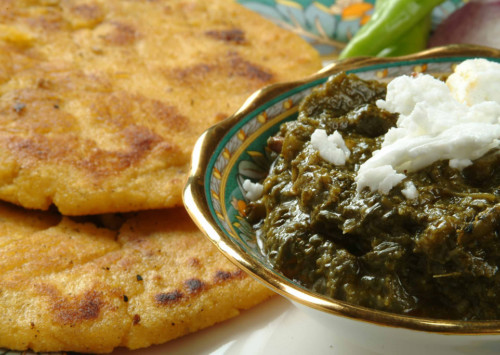Drawing parallels between Indian and French food cultures
Indian and French cuisines are not comparable, they are two very distinct cuisines with their own take on food, yet the one thing that ties the two nations together is their love for all things gastronomical. Here is an attempt to create a parallel between the cuisines of the two nations.
In many Indian homes, mornings begin with cups of chai (milk tea). While the drink is being thoroughly boiled, spreading its aroma all around, a meal is being prepared alongside. Paranthas (stuffed breads) and aloo poori (potatoes and fried bread) in north India; and idli (savoury rice cake) and poha (cooked rice flakes) in south India, are some traditional breakfast meals.
Time consuming as they are to prepare, a lot of people prefer a home cooked meal and make time to cook, even on weekdays, when they are in a rush to get to work; and those who can’t, they can easily buy home cooked meals.
Traditionally, Indians love breakfast. They like having savoury food for their first meal, which they consider to be the most important meal of the day and hence make it a big one. Although many do not get to practice this due to modern, on-the-run, lifestyles but for them the weekends are bliss.
“I can’t have a full meal like paranthas and lassi for breakfast, as is the traditional norm. It is too heavy. I also have to match my diet with my lifestyle so I end up having fruits, milk, salad, cereals or eggs. Weekends can be an exception,” says Pallavi Goel, a student of French language from New Delhi.
In France, from what I hear from a friend, coffee, hot chocolate and tartines (sweet or savoury spreads on breads or biscotti are the way to go. Chocolate filled croissants are also of huge appeal, and all these meals are ready to eat, picked from a store and enjoyed all week round.
“In contrast to India, I found breakfasts to be the lightest meal of the day in France,” says K Pugazhendhi, assistant professor at Jawaharlal Nehru University in New Delhi, who shares with us his experiences of French cuisine from a visit.
The luncheons are also light, enjoyed in a brasserie (a cafe or restaurant), where a wide range of sandwiches are on offer. Vegetable and fruit salads, yogurts and cheese are also consumed. Dinners are the heaviest or the most elaborate meal of the day, enjoyed slowly, in the company of family, and alongside lots of cheese and chats. Snacking is rare except among kids who enjoy their brioche (sweet bun) with chocolate or jam.
It’s quite opposite in India. One would rarely prefer a sandwich for lunch. Daal (lentils), sabzi (cooked veggies), curd, salad, and breads make for the average meal. Snacking culture is prevalent, with sandwiches on the menu. Dinner is again wholesome, and yes, enjoyed in the company of one’s family.
Plating the food
The French cuisine is mostly non-vegetarian. “France can be a difficult place for vegetarians. Even pastas are rarely veg. Everywhere I went, there was meat stew added in the preparation of the white sauce, leaving vegetarians only with the option of choosing tomato sauce pasta,” shares Pugazhendhi.
When it comes to non-vegetarian meals, the French have the red meat medium-cooked, in order to maintain its tenderness while savouries like oysters are eaten raw and with lemon/shallot vinegar. In India, however, meat is thoroughly treated and cooked. Most traditional Indian recipes are also gravy or curry based, and it is only in an adaptive fashion, that meat is consumed otherwise.
When it comes to textures, French and Indians have their own way. “The French try and put different textures on a platter – crisps, creams, jelly,” says Pugazhendhi. Indians on the other hand enjoy crunchy snacks like namkeen alongside particular dishes to play with textures.
“The French also try to keep the shape of the vegetable by cooking them without chopping,” Pugazhendhi notices. This is something Indians rarely do and have finely chopped veggies.
What’s not on the plate?
Just like the French, Indians love their bread but also rice.
“Unlike Indians, the French consume very little rice; and if at all they do, it is mostly in Italian dishes, which are also commonly eaten in France. I found a lot of Italian food in the south of France,” shares Pugazhendhi.
Rice is a staple food for many across India, particularly in the south, where it makes for many dishes. It is also eaten along with veggies and meat.
In north India, roti (bread) is the main accompaniment along with any vegetable or meat dish, a small portion of rice is never far away.
Talk of the meat!
“In France, most meals have non-vegetarian as their main dish. Vegetables are on the side,” shares Pugazhendhi. Although even Indians love their non-vegetarian meals, on most plates there is a healthy dose of vegetarian dishes. A reason for this is also the hot weather that governs most of the southern belt and a big chain in the north.
“In northern France, I found more meat and very less veggie; from what I guess is because of the cold weather. There were comparatively more veggies in south,” observes Pugazhendhi.
Spicing it up
“While Indians use whole or grounded spices like red chilli, garam masala, black pepper, etc., the French use more aromatic herbs like parsley, thyme, rosemary, nutmeg, et al.,” says Manju Sethi, an Indian living in France.
Sweet endings
“Indians have a lot of liquid deserts like kheer, rasmalai but I noticed only solids in France. “The French are big on baking and thus different from India, where baked goods alone do not define deserts,” says Pugazhendhi. Indian sweets are also very sugary as compared to French sweets.


